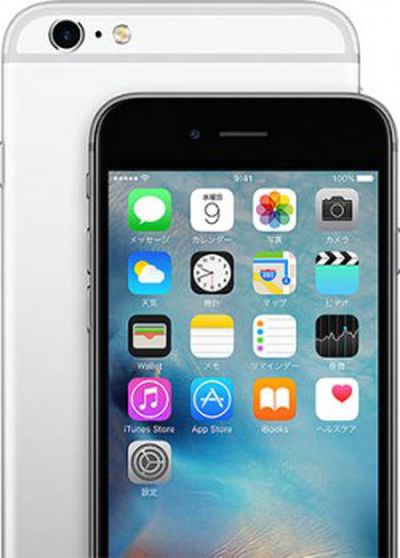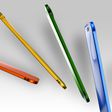Apple May Invest in AMOLED Supplier AU Optronics for Future iPhones
 Following rumors claiming that iPhones will adopt OLED displays in less than three years, Taiwanese website Focus Taiwan cites local media reports stating that Apple is planning to invest in AMOLED display supplier AU Optronics.
Following rumors claiming that iPhones will adopt OLED displays in less than three years, Taiwanese website Focus Taiwan cites local media reports stating that Apple is planning to invest in AMOLED display supplier AU Optronics.
According to the reports, Apple is likely to transform AUO into an active-matrix organic light-emitting diode (AMOLED) screen supplier for production of future iPhones, and if AUO agrees with Apple's fund injection plan, the Taiwanese firm could see its sales and gross margin grow significantly.
AU Optronics declined to comment on its potential investment deal with Apple, but the supplier's shares of the company gained 5.15% on Tuesday to close at NT$9.53 on the Taiwanese stock market amid the rumors.
AU Optronics, which has supplied LCD panels to Apple in the past, has reportedly been developing AMOLED displays for more than a decade, and last year it began shipping AMOLED panels to Huawei and other Chinese manufacturers. Apple currently uses LCD panels for iPhones, sourced primarily from Sharp and Japan Display.
Last month, it was reported that Apple has been recruiting talent from AU Optronics and Qualcomm to work at a Taiwanese factory, where the company is purportedly developing thinner, lighter and brighter displays for future Apple devices. The secretive lab may be specifically focused on OLED and Micro-LED technologies.
Samsung, LG and Japan Display have also been rumored to provide Apple with OLED displays for iPhones starting in 2018.
OLED displays typically have brighter colors and deeper blacks, and the lack of a backlight increases power efficiency, but the panels can also have shorter lifespans and higher manufacturing costs compared to LCD technology. Apple has reportedly been consulting with OLED panel makers to eliminate potential drawbacks.
Samsung is the most popular smartphone maker that uses AMOLED displays, while the Apple Watch became Apple's first AMOLED device last April.
Popular Stories
Since the iPhone X in 2017, all of Apple's highest-end iPhone models have featured either stainless steel or titanium frames, but it has now been rumored that this design decision will be coming to an end with the iPhone 17 Pro models later this year.
In a post on Chinese social media platform Weibo today, the account Instant Digital said that the iPhone 17 Pro models will have an aluminum...
Apple is continuing to refine and update iOS 26, and beta three features smaller changes than we saw in beta 2, plus further tweaks to the Liquid Glass design. Apple is gearing up for the next phase of beta testing, and the company has promised that a public beta is set to come out in July.
Transparency
In some apps like Apple Music, Podcasts, and the App Store, Apple has toned down the...
In select U.S. states, residents can add their driver's license or state ID to the Wallet app on the iPhone and Apple Watch, providing a convenient and contactless way to display proof of identity or age at select airports and businesses, and in select apps.
Unfortunately, this feature continues to roll out very slowly since it was announced in 2021, with only nine U.S. states, Puerto Rico,...
Apple will launch its new iPhone 17 series in two months, and the iPhone 17 Pro models are expected to get a new design for the rear casing and the camera area. But more significant changes to the lineup are not expected until next year, when the iPhone 18 models arrive.
If you're thinking of trading in your iPhone for this year's latest, consider the following features rumored to be coming...
Apple is expanding the ability to add an Apple Account Card to the Wallet app to more countries, according to backend Apple Pay changes.
With iOS 15.5, Apple updated the Wallet app to allow users to add an Apple Account Card, which displays the Apple credit balance associated with an Apple ID.
If you receive an Apple gift card, for example, it is added to an Apple Account that is also...
Three out of four iPhone 17 models will feature more RAM than the equivalent iPhone 16 models, according to a new leak that aligns with previous rumors.
The all-new iPhone 17 Air, the iPhone 17 Pro, and the iPhone 17 Pro Max will each be equipped with 12GB of RAM, according to Fixed Focus Digital, an account with more than two million followers on Chinese social media platform Weibo. The...
Apple should unveil the iPhone 17 series in September, and there might be one bigger difference between the Pro and Pro Max models this year.
As always, the Pro Max model will be larger than the Pro model:iPhone 17 Pro: 6.3-inch display
iPhone 17 Pro Max: 6.9-inch displayGiven the Pro Max is physically larger than the Pro, it has more internal space, allowing for a larger battery and...
The calendar has turned to July, meaning that 2025 is now more than half over. And while the summer months are often quiet for Apple, the company still has more than a dozen products coming later this year, according to rumors.
Below, we have outlined at least 15 new Apple products that are expected to launch later this year, along with key rumored features for each.
iPhone 17 Series
iPho...
 Following rumors claiming that iPhones will adopt OLED displays in less than three years, Taiwanese website Focus Taiwan cites local media reports stating that Apple is planning to invest in AMOLED display supplier AU Optronics.
Following rumors claiming that iPhones will adopt OLED displays in less than three years, Taiwanese website Focus Taiwan cites local media reports stating that Apple is planning to invest in AMOLED display supplier AU Optronics.


















